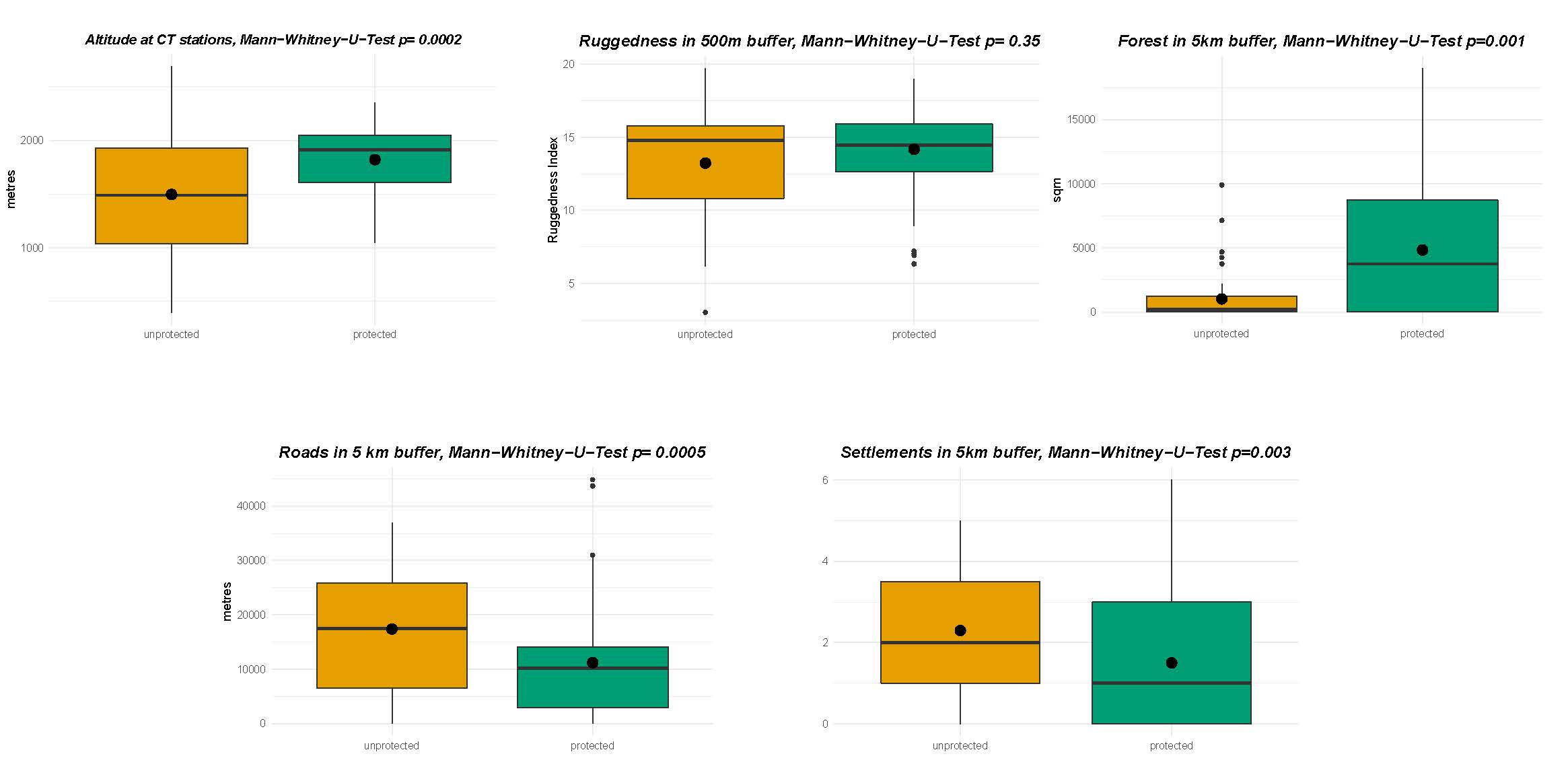Variation in large mammal communities in protected and unprotected areas in the southern Caucasus
Juliana Eggers
Large mammal communities are increasingly threatened by habitat fragmentation and degradation due to the ongoing expansion of human civilisation. The establishment of protected areas (PAs) is considered as an effective area-based conservation tool to preserve species in their natural habitats. But it is frequently unclear, how effective PAs are in protecting native species. Furthermore, PAs are often established in remote areas that have low economic value. This bias in the site selection of PAs can have a significant impact on species richness and diversity. In my work, I was able to prove that such a bias also exists in the biodiversity-hotspot Caucasus, where PAs are often located at higher altitudes, far away from civilisation.
Based on this information, I compared mammal communities in protected and unprotected areas with and without consideration of this bias. Thus, I evaluated not only the effectiveness of PAs in relation to different IUCN PA-categories, but also how the site selection of PAs impacted the structure of mammal communities. I worked with camera-trap data to determine species richness, diversity and relative abundance of mammal communities in general and large carnivores in particular. I found that as selection bias decreased, differences between communities inside and outside of PAs became smaller, suggesting that site selection has a greater influence on species communities than the effectiveness of PAs. However, especially mammal diversity and the presence and richness of carnivores were higher in PAs, even taking selection bias into account. Particularly for carnivores, the level of protection and the presence of strictly protected areas was additionally important. In my study, I was able to show that PAs in the Caucasus are characterised by higher species richness and diversity, but that this cannot be attributed solely to the effective work of PAs but it is also due to their location.

Identification of selection bias in the locations of PAs in the Caucasus
